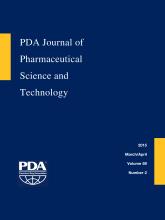Abstract
Recent evidence has shown improved outcomes in pediatric intensive care units with the intensive use of intravenous in-line filtration. This has caused resurgence in interest in filter use but has raised questions in relation to emulsion-based formulations such as propofol. Our objective was to test two propofol products, Diprivan® and Fresofol®, with the Pall Lipipor® TNA and Lipipor NLF intravenous in-line filters and to assay the content before and after filtration under typical infusion conditions. The propofol emulsions were delivered from a 50 mL syringe through an extension set and into either a Lipipor TNA (50 mL/h–1) or Lipipor NLF (20 mL/h–1) filter. Samples were taken at regular intervals and assayed using a high-performance liquid chromatography method before and after filtration. No evidence was found of a significant concentration change during passage of either product through either model of filter. Propofol from two products was found to pass through two different types of Pall 1.2 μm intravenous in-line filters. There was no significant change in concentration before and after filtration under typical conditions of administration. In conclusion, administration of these products through these models of in-line filter would be safe and effective.
- © PDA, Inc. 2015
PDA members receive access to all articles published in the current year and previous volume year. Institutional subscribers received access to all content. Log in below to receive access to this article if you are either of these.
If you are neither or you are a PDA member trying to access an article outside of your membership license, then you must purchase access to this article (below). If you do not have a username or password for JPST, you will be required to create an account prior to purchasing.
Full issue PDFs are for PDA members only.
Note to pda.org users
The PDA and PDA bookstore websites (www.pda.org and www.pda.org/bookstore) are separate websites from the PDA JPST website. When you first join PDA, your initial UserID and Password are sent to HighWirePress to create your PDA JPST account. Subsequent UserrID and Password changes required at the PDA websites will not pass on to PDA JPST and vice versa. If you forget your PDA JPST UserID and/or Password, you can request help to retrieve UserID and reset Password below.






